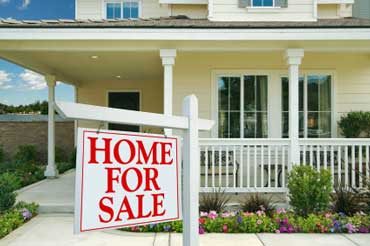If you’re considering selling a house and hiring an agent you should be looking for a real estate marketing expert, not just an agent. Your agent should have a solid plan for marketing for selling a house, and will put that knowledge to use, with the right marketing mix, to successfully sell your home. This is the first in a series of blogs on the “4 P’s” of a marketing mix, called “Guide to Marketing for Selling a House”.
What is a “marketing-mix” anyway? The term marketing-mix was first coined by Neil Borden, the president of the American Marketing Association in 1953. It’s still used today by product marketers to make important decisions that lead to the execution of a successful marketing plan. It’s a business tool which help determines a product or brand’s offer.
We use the 4P’s model when deciding how best to position your home to be competitive in the market. We also use it to identify the errancies of an expired, or ‘failed’, home marketing strategy. We go through and answer particular 4P’s questions – as we’ll define in greater detail later.
Ultimately we develop the marketing strategy from the customer’s perspective, by asking customer focused questions:
- Does it meet their needs? (product)
- Will they consider it’s priced favorably? (price)
- Will they find it where they shop? (place)
- And will the marketing communications reach them? (promotion)
Guide to Marketing for Selling a House: Part I – PRODUCT
Your Home as a Product
Your home, when placed on the market, becomes the product. Its physical attributes, location, unique selling features, weaknesses, and condition all affect its salability. With your home as a product, making sure your home is in the best condition possible and taking care of the little imperfections that buyers will see as bigger problems will improve the salability of your home.
CONDITION
Condition affects the pricing of your home, either positively or negatively. If your home is in immaculate condition or has features that make it more desirable than competing homes, it will likely realize a higher selling price. Conversely, if your home is in poor condition, needs repairs or is inferior compared to competing homes, it will likely sell for a lower price.
FEATURES
To give your home a competitive edge in the real estate market and maximize its marketability involves emphasizing the home’s best-selling features, addressing any areas that need attention, and presenting a well-maintained and project-free home. The goal is to provide buyers a cohesive and attractive look throughout the home so they can easily – and immediately – visualize themselves living in the home.
APPEAL
Today’s buyers have high expectations in getting the most home for their investment. They search endless hours on the internet FIRST before calling a real estate agent to see a property. For your home to appeal to the broadest array of potential buyers it must have multiple, beautifully staged pictures that make it memorable, and creates a presentation that entices the buyer to want to see it first-hand.
VALUE
Establishing value goes beyond the current market conditions, trends and comparable properties. Value is, more specifically, determined by the combination of your home’s condition and present market situation versus a buyer’s individual circumstances and overall perception of your home.
This is only the first part of a series. To hear more about how we develop the right marketing mix for our clients email or call us today: RisCowan@tds.net or (678) 362-5563.
Part I: PRODUCT – Your Home as a Product
Part II: PRICE – Your Home’s List Price
Part III: PLACE – Places to Advertise Your Home
Part IV: PROMOTION – Listing Promotion

